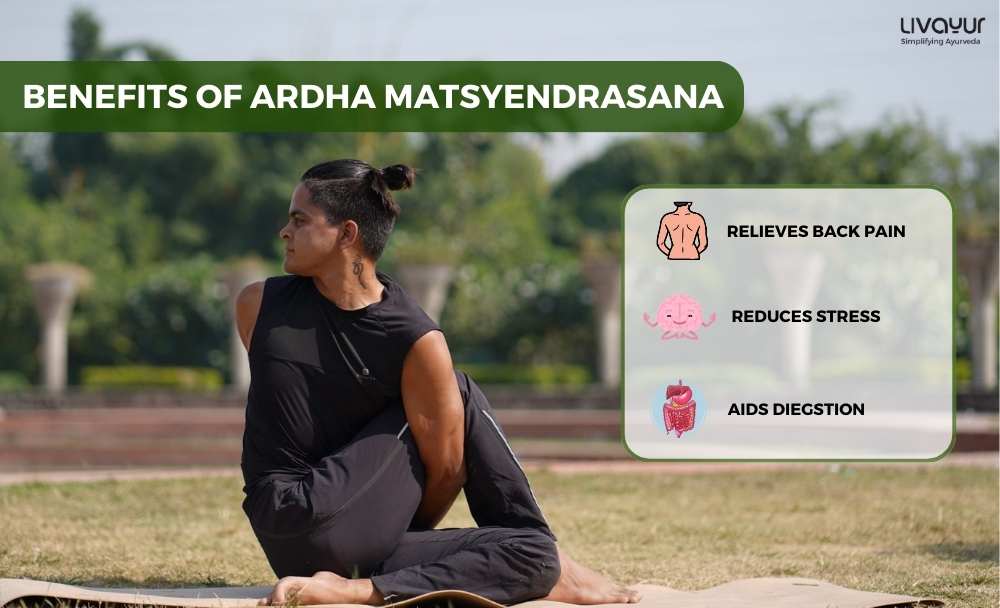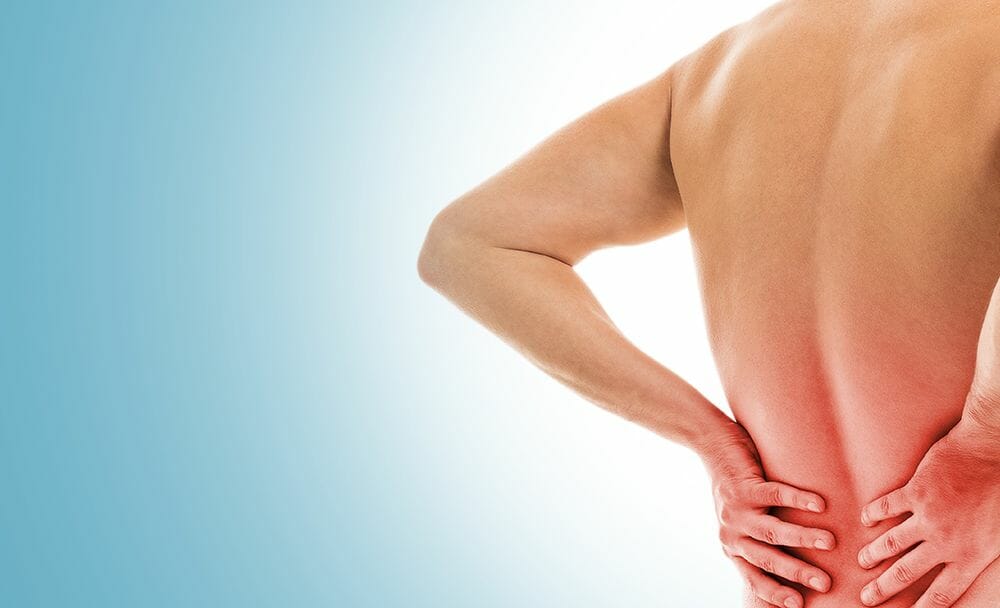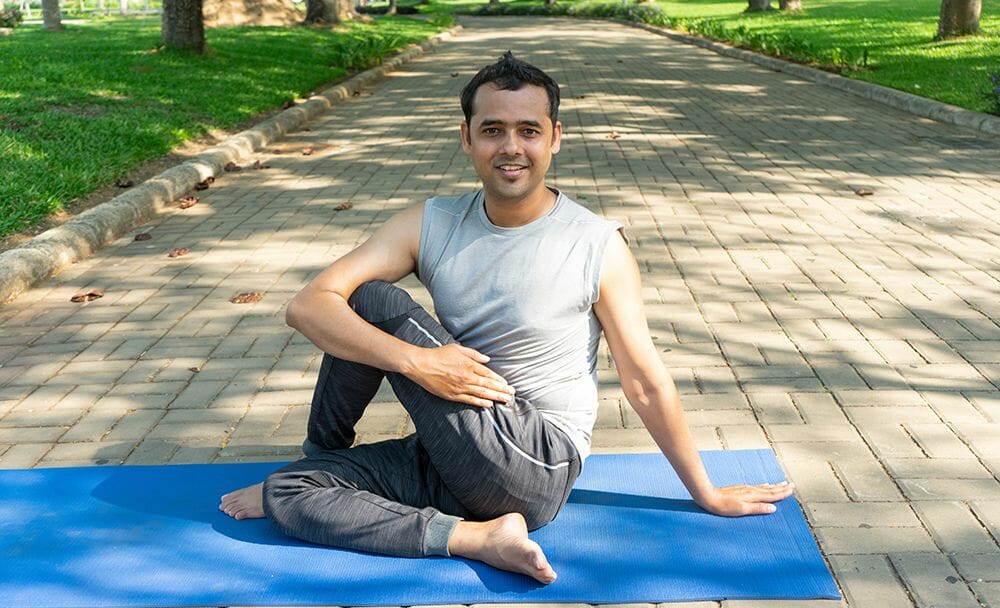
Ardha Matsyendrasana, commonly known as Half Lord of the Fishes Pose, is one of the numerous yoga asanas that hold a significant place in the yoga repertoire for its effects on the neck Range Of Motion (ROM) and life’s quality for people suffering from subacute mechanical neck pain and cervical spondylosis. The onset of mechanical neck pain is often gradual, and its origin is influenced by multiple factors such as weakened neck muscles, strains in the neck, poor posture, as well as emotional factors such as depression and anxiety. A diverse array of physiotherapeutic interventions is available for managing mechanical neck pain, although the most effective approach is yoga. [1] Ardha Matsyendrasana is renowned for its transformative effects on the body and mind.
According to Ayurveda, the asana is said to aid digestion and thus is beneficial for balancing the samana vata and pachaka pitta. Apart from this, it also facilitates proper peristalsis and hence is an ideal solution for bloating and constipation. This entails that is a good remedy for the balanced functioning of the apana vata. [4]
In this article, we will delve into the benefits of this pose and learn how to perform it correctly.
Benefits of Ardha Matsyendrasana
Relief from Back Pain:

Ardha Matsyendrasana provides a gentle stretch to the back muscles and the muscles surrounding the spine. Regular practice can help alleviate back pain and discomfort, especially in the neck area. [1]
Effect on Annavaha Srotas:
The “Sharira” is a complex amalgamation of Dosha, Dhatu, and Mala which should be in complete balance for you to stay hale and hearty. Any deviation or imbalance is known as “Dushti” or “Vridhi”. Certain factors can lead to the manifestation of diseases primarily related to the processing and metabolism of food, known as Annavaha Srotas. Ardha Matsyendrasana is one of the best asanas due to the twisting action of the pose stimulating the abdominal organs that can help with these conditions related to digestion. [2]
Stress Relief:
The practice of yoga, including Ardha Matsyendrasana, incorporates deep breathing and mindfulness. This combination helps reduce stress and anxiety, promoting a sense of calm and relaxation. [2]
Other benefits:
Some of the other Ardha Matsyendrasana benefits also include the its ability to help with conditions like Diabetes, Constipation, Anorexia, cervical spondylitis, Urinary tract disorders, menstrual disorders, Asthma, and infertility. [2]
How to Perform Ardha Matsyendrasana

Step 1:
The Ardha Matsyendrasana procedure begins by assuming an upright seated position with your legs extended forward. Ensure that your feet are neatly aligned and your spine maintains impeccable erectness.
Step 2:
Next, gently fold your left leg at the knee, allowing the left foot’s heel to rest adjacent to your right hip. Alternatively, you can choose to extend your left leg straight if it suits you better.
Step 3:
Following this, position your right leg over your left knee, ensuring that it comfortably aligns with the knee’s position.
Step 4:
Initiate a controlled twist by rotating your waist, neck, and shoulders towards the right side. Your focal point should be directed over your right shoulder. Always prioritize maintaining the erectness of your spine during this movement.
Step 5:
Bring your right arm around your left knee, reaching for your left foot or ankle. If this is challenging, you can instead place your right hand on the floor behind you.
Step 6:
There are various ways to position your arms to enhance or diminish the stretch. For a straightforward approach, you can place your right hand behind you while resting your left hand on your right knee.
Step 7:
As you hold the pose, take deliberate breaths, inhaling and exhaling slowly for around 30 to 60 seconds.
Step 8:
When ready to transition out of the pose, exhale gently and commence by releasing your right hand, followed by the waist, chest, and finally, the neck. Allow yourself to unwind in a state of relaxation while sustaining an upright seated posture.
To ensure a balanced practice, replicate the sequence on the alternate side. When prepared, exhale gradually and return to the original frontal position. [3]
FAQs
• What are some precautionary measures you should bear in mind while practicing Ardha Matsyendrasana?
If you have a recent or chronic back injury, practice this pose under the guidance of an experienced yoga teacher or healthcare professional. Pregnant individuals should practice Ardha Matsyendrasana cautiously and modify the pose to avoid compressing the abdomen. For a gentler variation, keep the bottom leg extended and place the foot of the top leg on the floor outside the opposite knee. Use props like blankets or blocks to support your body and make the pose more accessible.
• What sets Matsyendrasana apart from Ardha Matsyendrasana?
Matsyendrasana encompasses a complete spinal twist, accompanied by the back foot being positioned on the thigh, similar to the posture of padmasana. On the other hand, Ardha Matsyendrasana involves the back foot finding placement on the ground.
• What is the recommended frequency for practicing Ardha Matsyendrasana?
Ardha Matsyendrasana can be incorporated into your daily routine. A sequence of three repetitions, each being held for a brief duration, is advised.
Conclusion
Ardha Matsyendrasana is a yoga asana that offers many physical and mental benefits. The pose is a valuable addition to any yoga practice, from improving spinal flexibility and digestion to relieving back pain and stress. Incorporating Ardha Matsyendrasana into your routine can contribute to a healthier, more balanced lifestyle, fostering a harmonious connection between the body, mind, and spirit.
Disclaimer:
This article is written from a health and wellness perspective and is not medical advice. Kindly seek the help of a certified medical practitioner before initiating any treatment.
References:
- Effect of Ardh Matsyendrasana, OM Chanting and Proprioceptive Neuromuscular Facilitation on Cervical Range of Motion and Health Related Quality of Life in Subacute Bilateral Mechanical Neck Pain: A Randomised Controlled Trial
- ROLE OF ARDHA-MATSYENDRASANA ON DISEASES OF ANNAVAHA SROTAS IN PERSPECTIVE OF SHARIR
- How To Do The Ardha Matsyendrasana And What Are Its Benefits
- Ardha Matsyendrasana – Half lord of fishes pose, How to do, Benefits

















